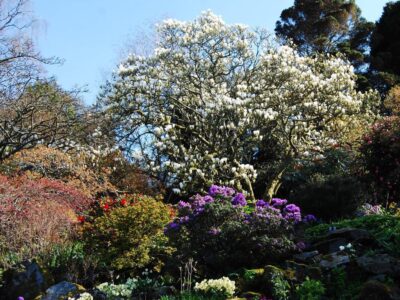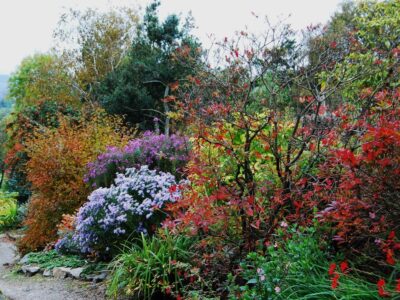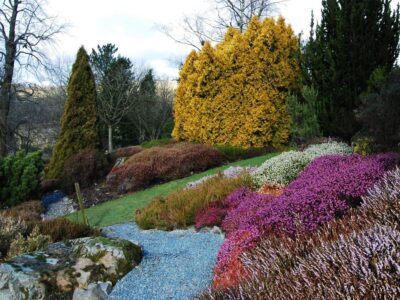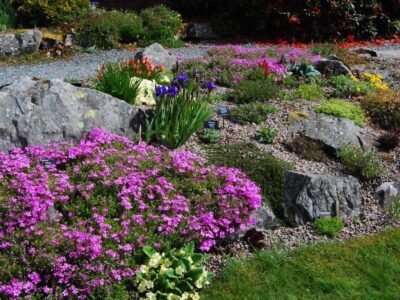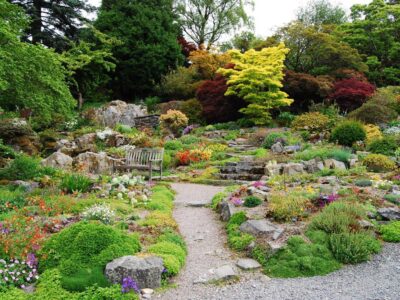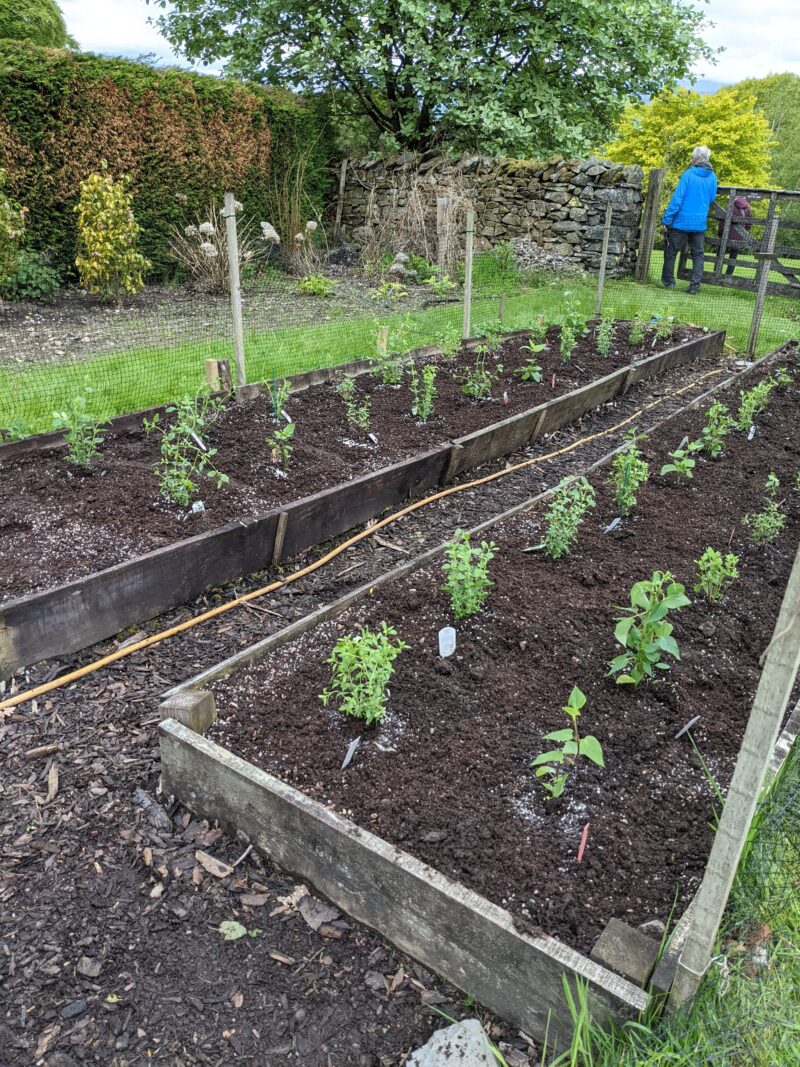
The Upper Garden
The Upper Garden is the most diverse area of Holehird Gardens. It occupies the full width of the Gardens, across the slopes of the fellside, with the upper parts accessible by bark and stone paths which are steep in places. Here you will find the rhododendron and magnolia beds, as well as the autumn and winter borders. Rose beds and ornamental grasses can be found closer to the tarmac drive.
The large Rock Garden was the first area to be developed by the Lakeland Horticultural Society when we came to Holehird in 1969. Nearby you will find the alpine and tufa houses, providing an opportunity for a close-up look at alpines.
The Upper Garden is also home to our four national collections - the national collections of astilbe, daboecia and polystichum each have their own location within or close to the fellside area, chosen according to the conditions they require, while the national collection of meconopsis can be seen growing in trial beds in the Paddock.
The Paddock is also where you will find the trial beds run by LHS on behalf of the RHS and other collaborating organisations.
Salvia Trial for 'Which ?' in the Paddock - Update 2023
The Salvia Trail Which? Started in June 2021 and finished in November 2022. We submitted our observations to the trial leader at Capel Manor in Enfield. The results will be compared to the observations taken from the same cultivars grown in Enfield.
The trial started in June 2021, 21 Salvia cultivars, a mix of semi hardy sub shrubs and tuberous boarderline hardy were planted into each of three trial beds. These are in a sunny position with good drainage.
Weekly assessments were recorded once the plants had developed the first flowers. These assessments included the appearance of the leaves and flowers, shape of the plant, attraction to bees and any sign of damage by pests.
The plants were watered if there had been a particularly dry spell and any weeds removed.
The Salvias had a composted bark mulch for over winter. This was placed around the base of the plant before the first frosts.
By the end of April of the second year,12 of the cultivars were showing signs of growth and the weather was dry. These plants were cut back to 15cm, mulched and watered well.
The assessments started again in June. Nine of the original 21 cultivars did not show any growth. Those that did return put on another colourful display.



